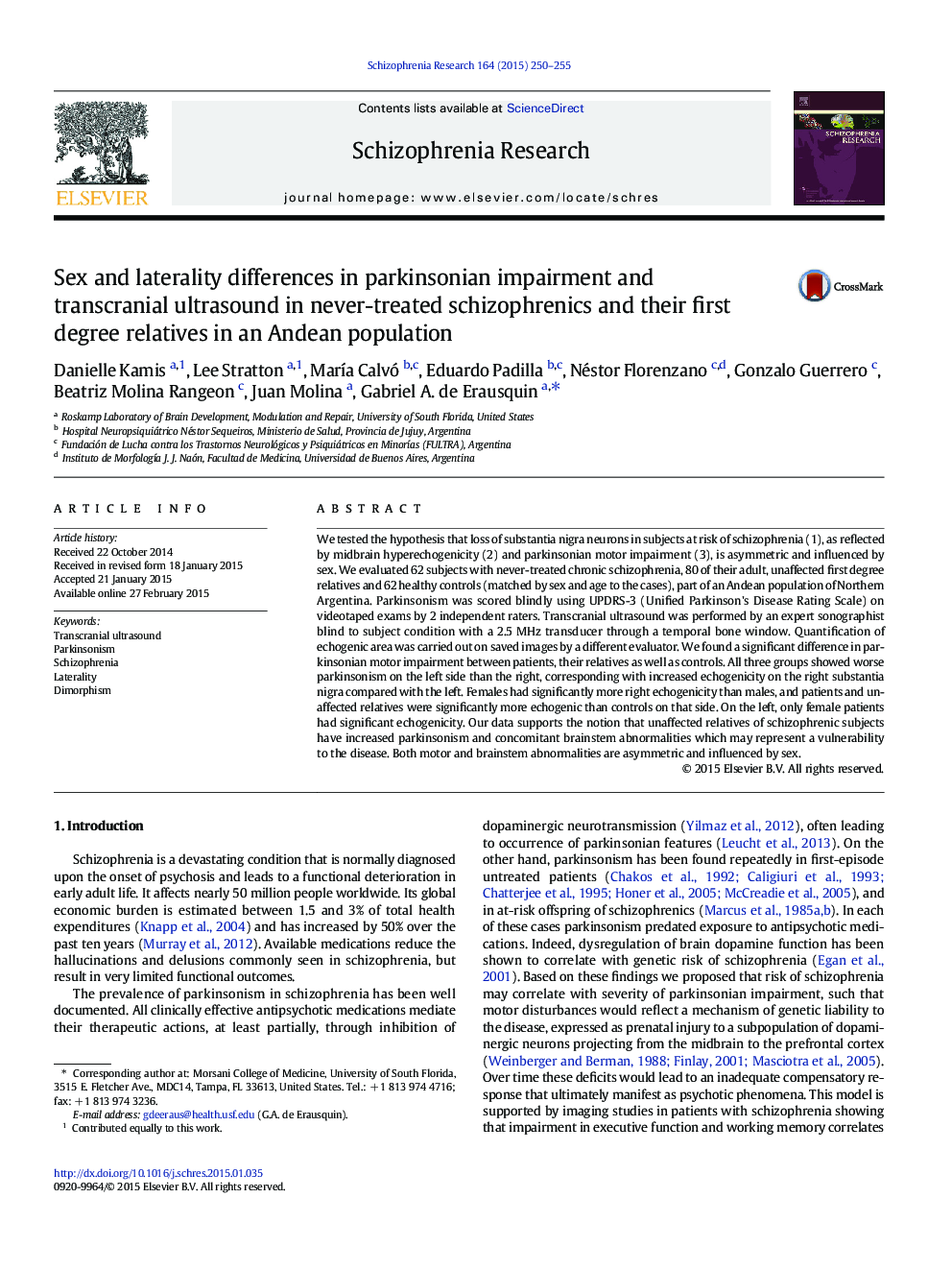| Article ID | Journal | Published Year | Pages | File Type |
|---|---|---|---|---|
| 6824047 | Schizophrenia Research | 2015 | 6 Pages |
Abstract
We tested the hypothesis that loss of substantia nigra neurons in subjects at risk of schizophrenia (1), as reflected by midbrain hyperechogenicity (2) and parkinsonian motor impairment (3), is asymmetric and influenced by sex. We evaluated 62 subjects with never-treated chronic schizophrenia, 80 of their adult, unaffected first degree relatives and 62 healthy controls (matched by sex and age to the cases), part of an Andean population of Northern Argentina. Parkinsonism was scored blindly using UPDRS-3 (Unified Parkinson's Disease Rating Scale) on videotaped exams by 2 independent raters. Transcranial ultrasound was performed by an expert sonographist blind to subject condition with a 2.5Â MHz transducer through a temporal bone window. Quantification of echogenic area was carried out on saved images by a different evaluator. We found a significant difference in parkinsonian motor impairment between patients, their relatives as well as controls. All three groups showed worse parkinsonism on the left side than the right, corresponding with increased echogenicity on the right substantia nigra compared with the left. Females had significantly more right echogenicity than males, and patients and unaffected relatives were significantly more echogenic than controls on that side. On the left, only female patients had significant echogenicity. Our data supports the notion that unaffected relatives of schizophrenic subjects have increased parkinsonism and concomitant brainstem abnormalities which may represent a vulnerability to the disease. Both motor and brainstem abnormalities are asymmetric and influenced by sex.
Related Topics
Life Sciences
Neuroscience
Behavioral Neuroscience
Authors
Danielle Kamis, Lee Stratton, MarÃa Calvó, Eduardo Padilla, Néstor Florenzano, Gonzalo Guerrero, Beatriz Molina Rangeon, Juan Molina, Gabriel A. de Erausquin,
